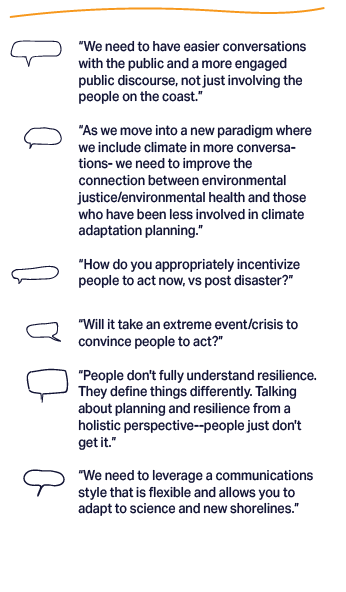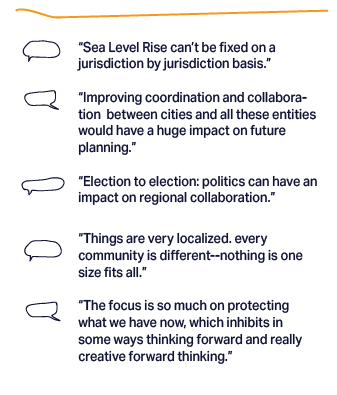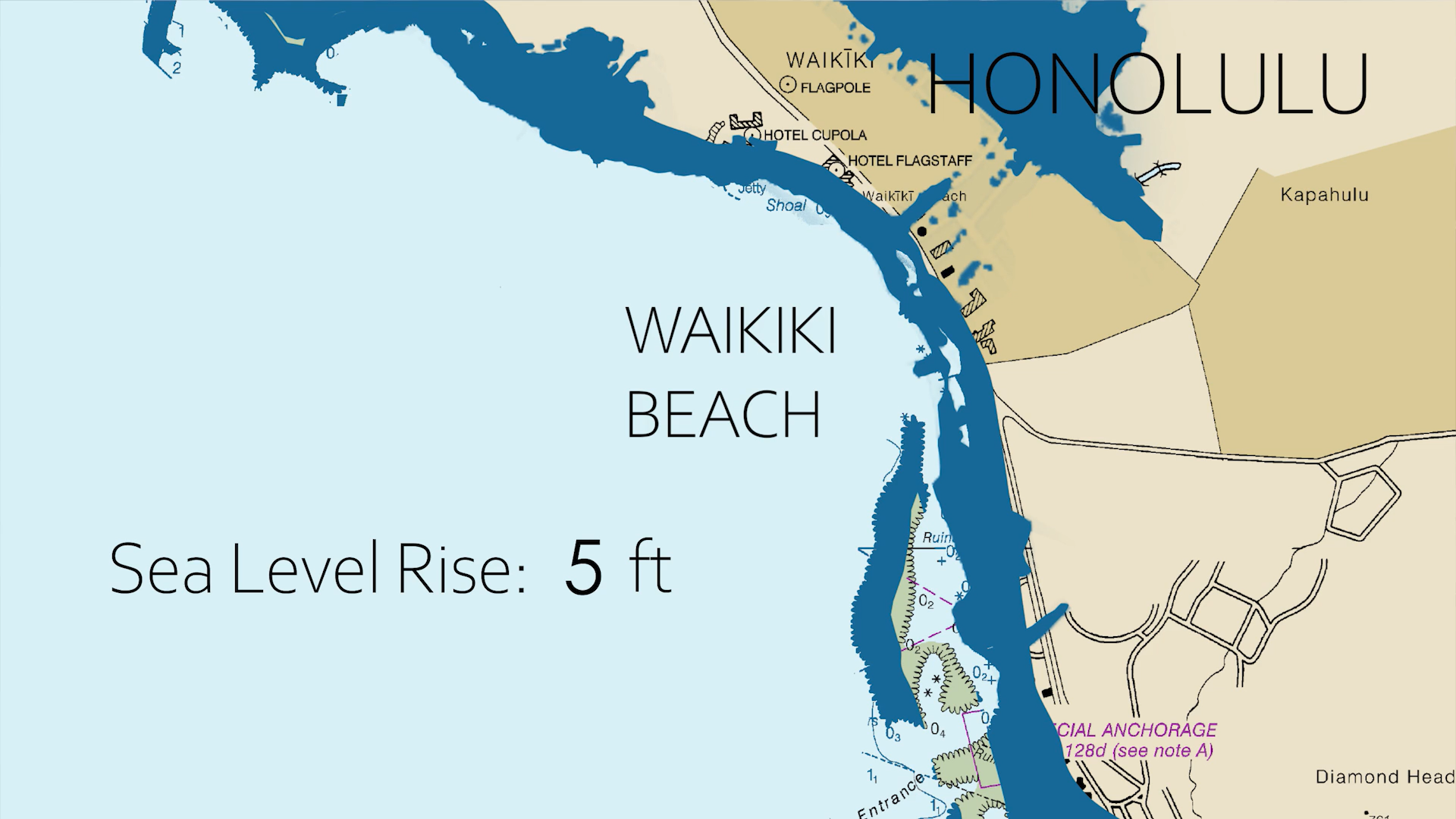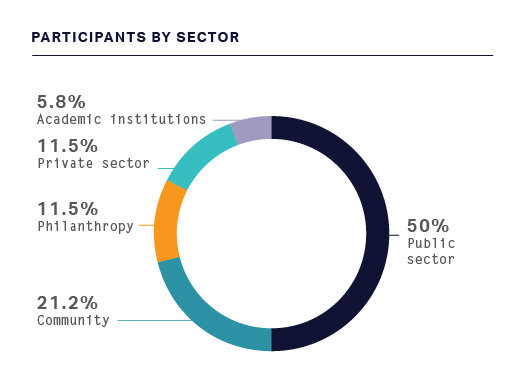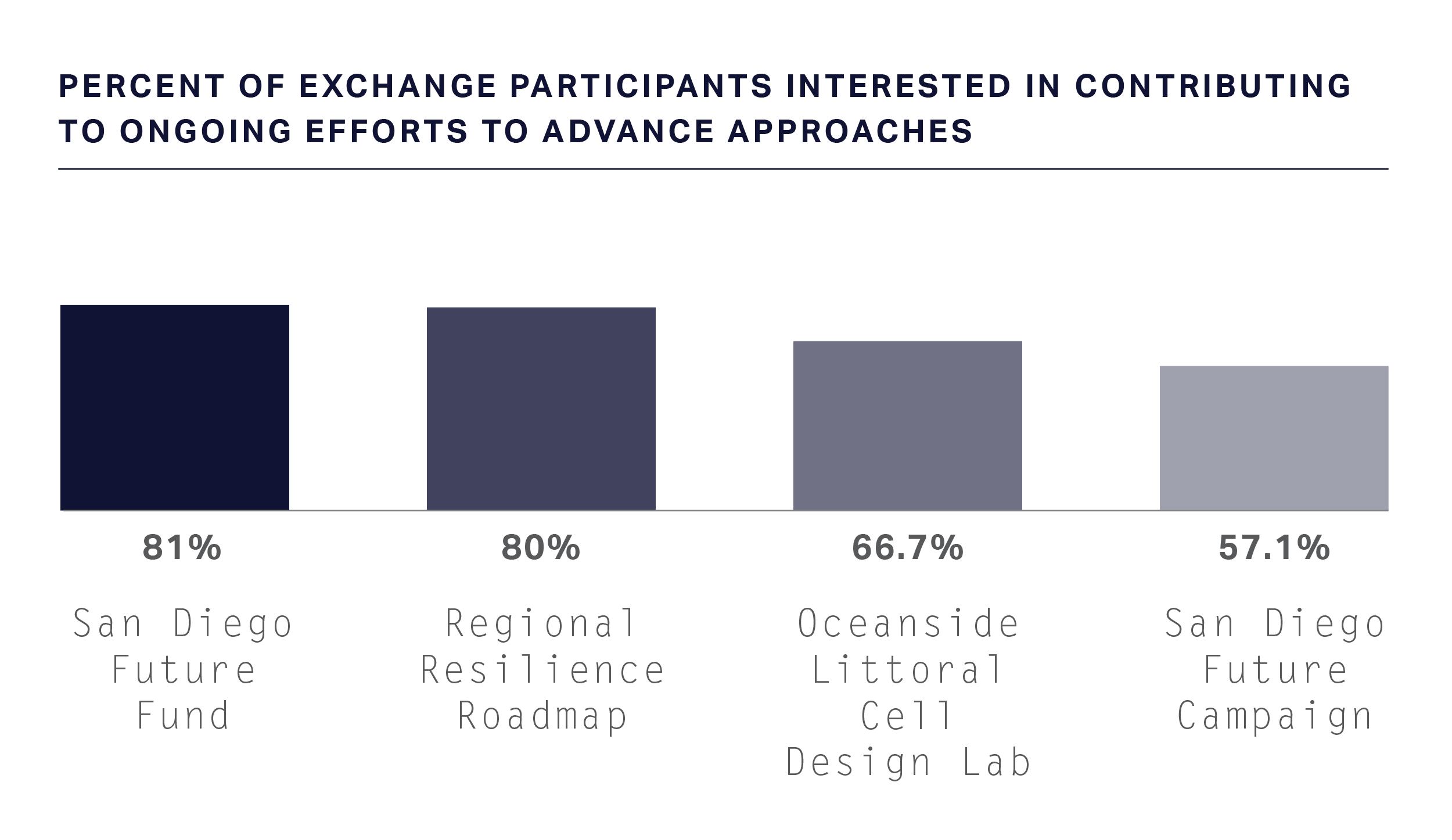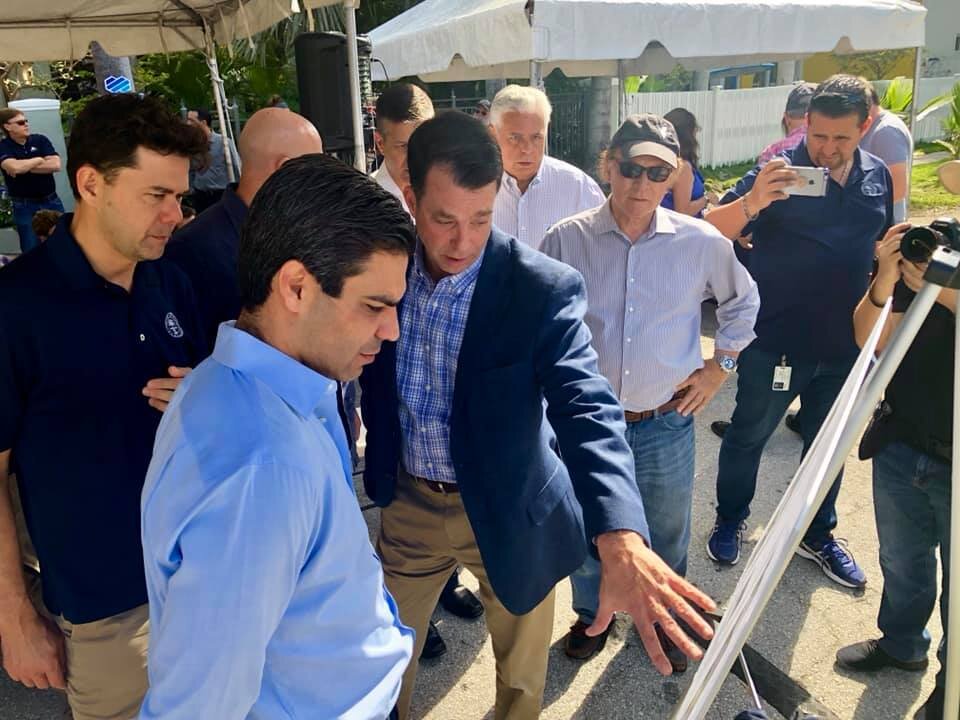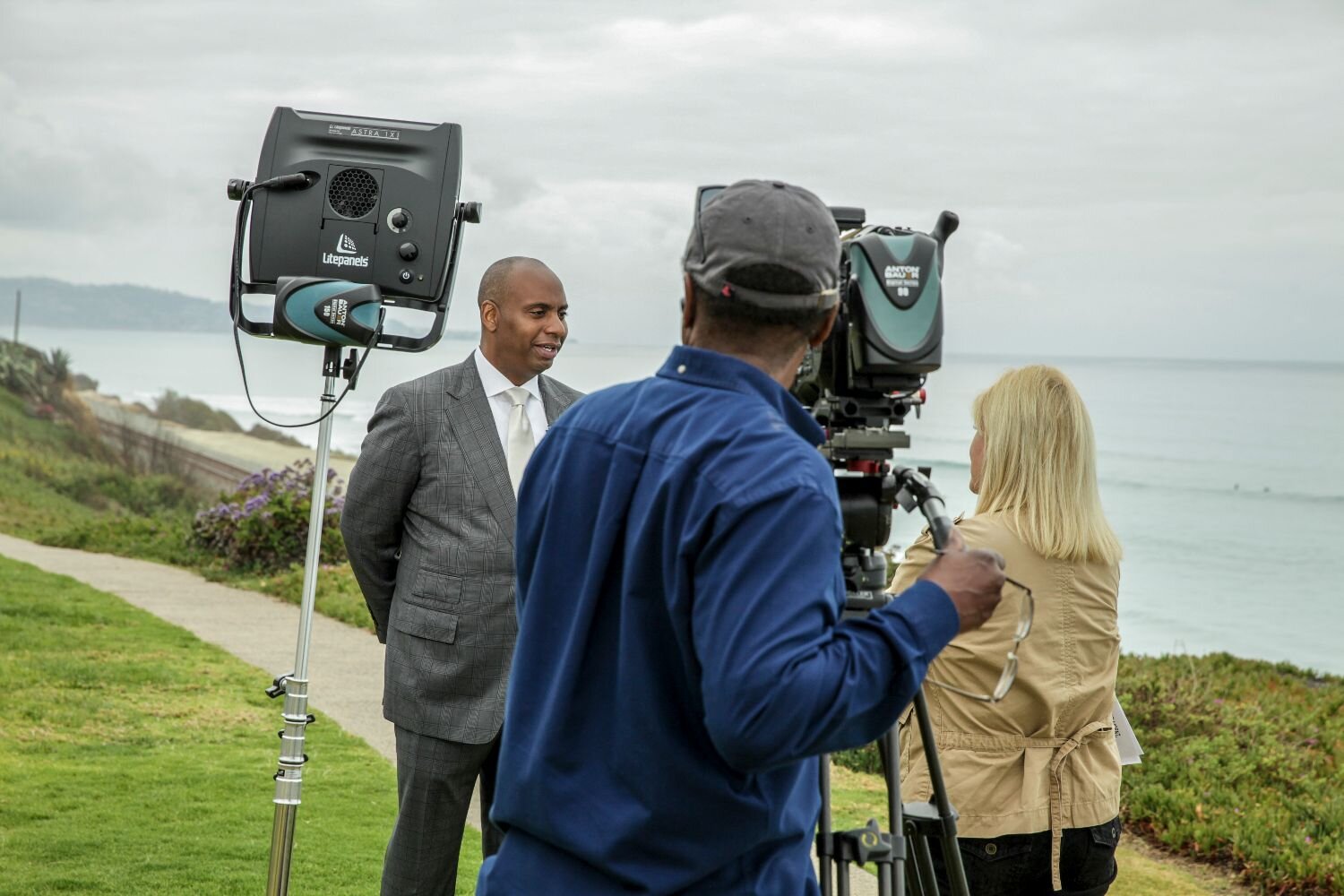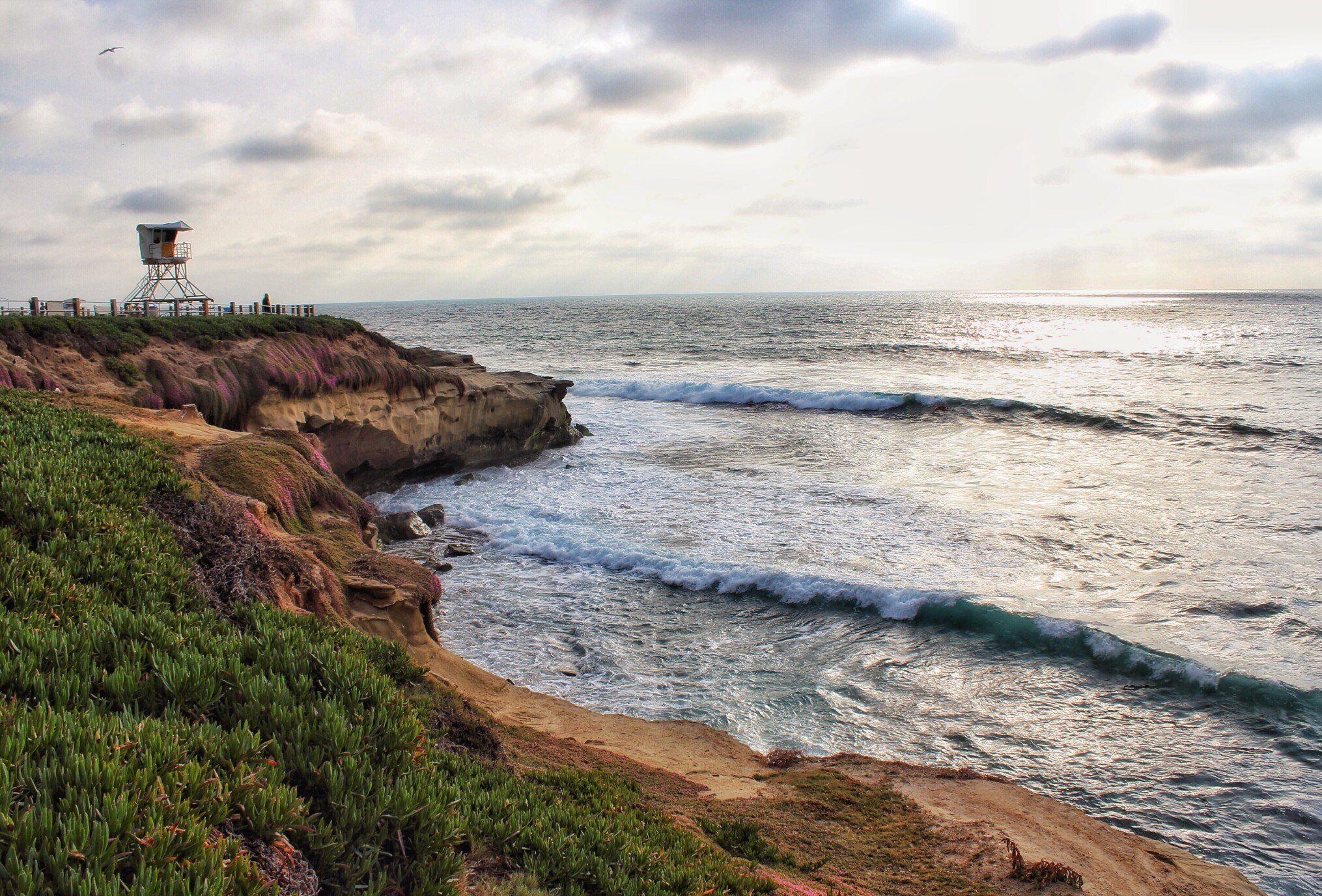
Introduction
Foreword
We are living in unprecedented times as we witness the global confluence of climate change, growing inequities, and the COVID-19 pandemic. The immensity of the current crisis is forcing us to recognize that communities cannot achieve sustained prosperity into the future if they are built on the degradation of their natural resources and growing social inequality. If we are to successfully adapt to a changing future, we must find ways to address inequities and promote shared prosperity in a way that works with Nature, not against her.
While all of this might have sounded like a tall order in the “before times” pre COVID-19, the past few months have shown us that the old adage, necessity is the mother of invention, is true. At a time when we cannot physically meet, we have quickly found new ways to connect, learn, and act together such as we have done with the first-of-its kind, virtual San Diego Coastal Exchange.
Given the global scope and scale of climate change, it is easy to feel overwhelmed by the enormity of the challenge. But if you look closely at what is happening on the ground in cities and regions across the globe, there are countless examples of innovative, bold action to reduce polluting emissions and build more climate-resilient communities. One has only to look at the San Diego region as an example.
Over the past decade or so, academia, business, government, nonprofits and philanthropy have come together to invest in and build localized scientific and technical expertise to guide cities and public agencies in an increasingly comprehensive effort to plan for and act on climate change. Likewise, a growing number of local leaders and residents recognize that climate change is already happening, and that a strong, inclusive economy and a clean environment go hand in hand.
These efforts have paid off. Our region has developed one of the most comprehensive regional understandings nationwide of our polluting emissions and the projected impacts of climate change. We have also conducted some of the most in-depth research on public opinion and leaders’ attitudes about climate change. With this enhanced local understanding of the issue, we have been able to advance many “firsts” in tangible action to address climate change. Examples include the Sea Level Rise Adaptation Strategy for San Diego Bay, the San Diego Regional Climate Collaborative, statewide partnerships to build the Alliance of Regional Collaboratives for Climate Adaptation, comprehensive climate action planning among cities across the region, a novel City of San Diego Climate Equity Index, an innovative mitigation bank, Pond 20, that also provides funding for climate adaptation in adjacent low-income neighborhoods in South San Diego Bay, a regional Shoreline Preservation Working Group dedicated to funding cities’ innovative coastal adaptation projects, a new Navy Seal Base constructed to adapt to rising sea levels, and so much more.
In a relatively short period of time, we have come a long way. With growing innovation in climate solutions that work with Nature instead of against, now is the time to step up and act even more boldly for the next decade. There is no time to waste. Our children and grandchildren are counting on us.
The California Resilience Partnership Program Model
The CRP Network
Connects resilience practitioners statewide to share best practices
State
Coordinates through the Governor's Office of Planning and Research with key state agencies to foster alignment
Regions
Co-creates regional resilience frameworks across jurisdictional partners to drive integrated project development activities
Communities
Primes projects for funding opportunities, leveraging global best practices and technical assistance
The Challenge
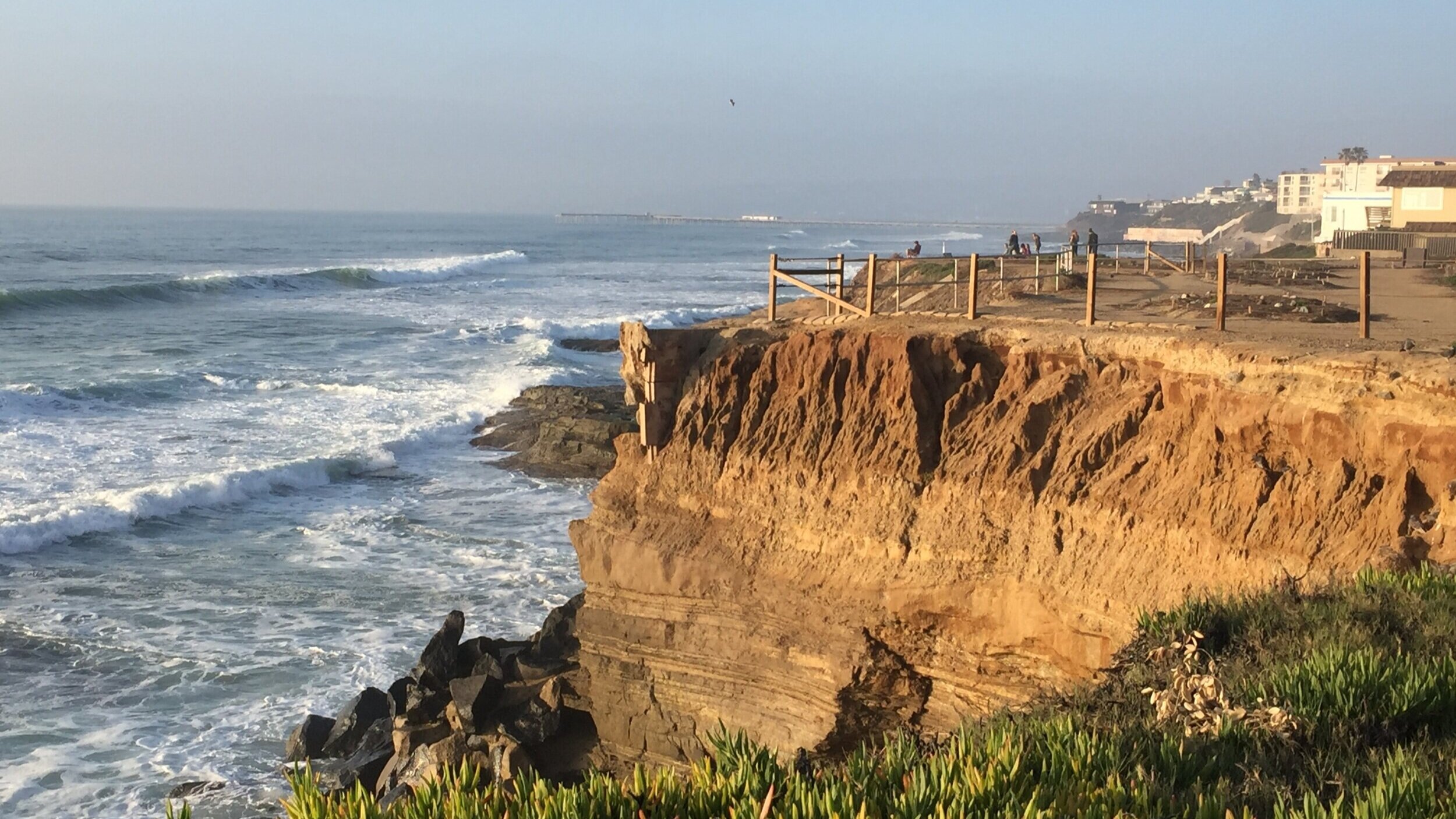
The Process

To explore innovative approaches to address these challenges in the context of the greater San Diego region, RCC and The San Diego Regional Climate Collaborative (SDRCC) convened global experts, along with key leaders in the region representing diverse community stakeholders, for the San Diego Region Coastal Exchange, a sequence of virtual immersive convenings and small group working sessions, in July 2020. Over the course of these sessions, participants gathered virtually, given the Covid-19 pandemic, to explore innovative design options that address coastal resilience challenges, and surfaced a set of viable projects and policies that are ripe for further advancement.
Our goals for the Exchange were to:
Bring together a diverse, cross-sectoral community of stakeholders to explore design options that address coastal erosion and interrelated resilience challenges, and surface a set of viable projects and policies that are ripe for further advancement.
Elevate local and global best practices and explore how they might be applied within the greater San Diego regional coastal context.
Promote further dialogue and connection among local and global stakeholders while laying the groundwork for implementation of innovative approaches.
Distill key insights and innovations that can be shared broadly to relevant stakeholders.
Advance a collective, community-driven vision for the future of San Diego's coastal communities.
PHASES
phase 1
Grounding our Dialogue in Local Solutions and Perspectives
Stakeholder Engagement and Opportunity Area Development
April-June 2020
phase 2
Fostering Inspiration and Idea-Generation through Global Best Practices
Development of Locally Resonant Global Case Studies
May-July 2020
phase 3
Envisioning Future Coastal Management Pathways
A sequence of four participatory virtual convenings
July 2020
PHASE 1:
Grounding our Dialogue in Local Solutions and Perspectives
Stakeholder Engagement and Opportunity Area Development
To kick off Exchange development, RCC and SDRCC spent several weeks conducting in-depth individual and small-group interviews with over thirty local stakeholders and compiling an analysis of these conversations. Stakeholders interviewed represented a variety of sectors and levels of government, including: City representatives from a variety of coastal communities in the region; academia; major regional institutions such as the Navy, Port, and Airport; philanthropy; and state and regional government entities such as the Coastal Commission and San Diego Association of Governments. These interviews and the resulting scan of participants’ feedback grounded later conversations, allowing the team to incorporate a variety of ideas and perspectives in workshop design, secure input across the ecosystem of Exchange participants, identify opportunity areas ripe for further exploration, and validate the selection of global best practices. Given the online format of this Exchange, this grounding was critical in building a foundation for productive conversations in later phases. Interview topics spanned three major categories: learning more about participants’ work and the San Diego coastal resilience landscape; future opportunities and challenges; and insights on the Exchange.
The Exchange team then scanned documentation across all interviews for common themes. Participants coalesced around four priority Opportunity Areas that emerged as clear themes ripe for further exploration at the Exchange.
Financing and Funding Coastal Resilience Solutions
Every stakeholder interviewed identified funding as a barrier to implementation of transformative coastal resilience projects. Beyond simply a lack of sufficient resources, participants flagged red tape and onerous regulatory requirements as impediments in accessing funding streams. In addition, stakeholders called for more flexible and adaptive financing strategies that could be tailored to dynamic needs and projects. Finally, they identified creative financing mechanisms, including those that leverage multiple sectors, multiple integrated funding streams, and innovative financing structures, as a key opportunity to drive implementation of impactful coastal resilience projects.
What RCC and SDRCC heard during stakeholder interviews:
Community Planning and Communicating Long-term Risk
Participants also underscored the need for innovation around interrelated challenges related to planning and communications. Communities are experiencing the damaging impacts of coastal erosion including flooding and bluff collapses—which pose a public safety hazard that has sadly had tragic consequences for local community members—more frequently, with this frequency only projected to increase with climate change. Communities need better tools as they navigate incorporating these considerations into planning and development strategies that decrease risk to residents over the long term. This is only amplified by challenges related to communications, both in terms of educating the public around complex topics related to climate and long-term risk that may be less salient to them in order to spur action, and in promoting sensitive but productive conversations about planning with community members. Numerous entities called out the opportunity to build upon the region’s strong culture of connectivity to the coastline and stewardship of natural resources, as well as world class educational and academic institutions, in deploying innovative new communications efforts that tackle these challenges.
What RCC and SDRCC heard during stakeholder interviews:
Strengthening Regional Governance and Regulatory Environments
Especially given that challenges resulting from coastal erosion, like other climate-driven challenges, are not confined to municipal boundaries, there is a strong need for collaborative coastal resilience projects and solutions that cross jurisdictions, entities, and sectors. Numerous entities in the region already play a critical role in supporting these collaborative efforts, including SDRCC, SANDAG, and many others. Stakeholders called for strengthening these collaborative structures and other models that can also help local jurisdictions navigate or streamline complex regulations across all levels of government and deploy tailored solutions that best fit local needs.
What RCC and SDRCC heard during stakeholder interviews:
Learning from Nature-Based Pilots and Scaling Success
Stakeholders saw great promise in nature-based interventions, but were hungry for strategies and guidance to implement them, especially in terms of overcoming regulatory barriers; to monitor and evaluate projects; and to replicate successful interventions. In addition, participants called for regional-scale coordination that would allow for these kinds of pilots to be deployed in an integrated way that could meet local needs and build towards regional coastal resilience goals.
What RCC and SDRCC heard during stakeholder interviews:
PHASE 2:
Fostering Inspiration and Idea-Generation through Global Best Practices
Development of Locally Resonant Global Case Studies
With these Opportunity Areas in mind, RCC leveraged its global network of resilience practitioners to develop three immersive video case studies for the Exchange. These case studies, delivered through compelling online video content, and narrated by local experts, aimed to set the stage for creative thinking and idea generation among stakeholders about what is possible in San Diego’s coastal beach communities.
The Cardiff State Beach Living Shoreline
Encinitas, California
This multi-jurisdictional collaboration led by the City of Encinitas and the State Coastal Conservancy brought together multiple state, federal, private, non-profit, and academic partners to pilot a nature-based approach to coastal management at Cardiff State Beach. Coastal erosion posed a significant threat to the community: local businesses and Highway 101 were experiencing increasingly frequent and costly flood damage, while continuous erosion of the beach threatened not just a prized natural resource and community touchstone, but a key driver of the local tourism economy. Traditional hard approaches to coastal management, like seawalls, groins, and levies, were both costly and short term, and provided no benefits beyond coastal hardening. The City and its partners instead turned to a Living Shoreline, a natural solution that leverages buried riprap, a buried revetment, and restored dune designed to capture sand and prevent erosion, while also restoring and protecting shoreline ecosystems and offering additional community access benefits. The Living Shoreline incorporates native coastal plants, which boosts biodiversity, and has created new habitat for endangered species such as the Snowy Plover. At the same time, it protects the community from flooding and enhances connectivity both to the coastline and among coastal communities. The innovative approach will be monitored for five years by UCLA and the Scripps Institution of Oceanography at the University of California San Diego; preliminary results released in the spring of 2020 found that it was successful in preventing coastal erosion. This project can be considered a model for nature-based solutions across California and beyond.
Special Improvement District
Waikiki, Hawaii
Honolulu, Hawaii’s Waikiki is another community where the coastline plays a central role both in terms of cultural identity and as a driver of economic activity. Generating $2 billion per year in economic impact, largely through tourism, the beach supports a historic surfing community. But the manmade, highly engineered Royal Hawaiian Beach is unstable and chronically eroding—putting communities and livelihoods at risk. When traditional tactics in implementing coastal resilience projects proved too slow and required large amounts of capital, local business and property owners—recognizing the full economic value of the coastline to these businesses and communities—formed a novel entity in partnership with state and local governments: the Waikiki Special Improvement District Association. This public private model allows partners to jointly fund priority projects that build coastal resilience, pooling private investments along with matching government funding. The University of Hawaii shares data and the latest academic research to inform decisionmaking. And an advisory committee that includes Association members helps to build consensus around coastal projects. Since its establishment in 2015, the Association has launched seven projects, including several groins that have helped to stabilize the beach. This innovative model underscores two important lessons: first, showing the importance of a complete understanding of the economic value of natural assets in making the business case for resilience projects; and second, how revenue generation and climate adaptation can go hand in hand.
The Sandmotor
the Netherlands
In the Netherlands, the Dutch government worked with scientists, local officials, and other stakeholders to construct the Sandmotor: a peninsula of 21.5 million cubic meters of sand off the Dutch coast that combats coastal erosion. Previously, rapid erosion of the coastline threatened nearby coastal cities, requiring repeated interventions such as nourishment and replenishment that were both costly and disruptive to natural ecosytems. The innovation of the Sandmotor is that it works with rather than against nature, capitalizing upon the natural movements of wind, tides, and ocean currents to replenish sand and protect the coastline. As a result, large amounts of sand are redistributed naturally. This example of dynamic coastal engineering allows natural habitats and dunes to sustain themselves and evolve without human impact. While originally launched as a pilot that was estimated to last for 20 years, the model has proved so successful that scientists now predict it will sustain the coastline for approximately double that timeframe. Over the past decade, scientists and project partners have used an innovative system that includes a sophisticated network of cameras, along with data collection and sharing, to continuously monitor and track coastal systems. The Sandmotor provides multiple additional benefits beyond coastal defense: the open space, with its now flourishing restored ecosystems, also serves as an important source of active recreation activities for local residents and draws a significant number of tourists, generating economic activity for the region.
PHASE 3:
Envisioning Future Coastal Management Pathways
A sequence of four participatory virtual convenings
Building directly upon the stakeholder engagement and Opportunity Area development, and leveraging the global best practice videos developed for the convening as inspiration, RCC and SDRCC then held an integrated sequence of four participatory virtual convenings over the course of two weeks in July 2020. Just over 50 stakeholders representing a variety of stakeholder groups contributed their expertise to these sessions.
Laura Engeman, Coastal Resilience Specialist at the Scripps Institution of Oceanography at UC San Diego, provided introductory remarks during the Opening Webinar.
Opening Webinar
The Exchange’s Opening Webinar set the stage for forthcoming sequence of activities by fostering community, grounding the work in local and global context, and beginning to source shared values for the coastline that informed the rest of the Exchange.
Participants were welcomed by RCC facilitators as well as local leaders, who inspired them collaboratively to bring fresh thinking and generate new approaches to the region’s entrenched coastal resilience challenges. After a deep dive into these challenges, RCC provided an introduction to important coastal resilience concepts. Finally, during breakout sessions in small facilitated groups that allowed for engaging conversation, participants generated and discussed a shared vision that evoked goals and aspirations for their community's coastal future. These visions spanned diverse topics, including natural ecosystems, the economy, open space, infrastructure, and access to the coast.
Here are some of the values that were most important to participants, and that grounded conversations in laster phases of the Exchange.
Coastal Resilience Innovations Webinar
After watching the three video case studies created for the Exchange featuring innovative global project examples from San Diego, Waikiki and the Netherlands, participants re-convened for a second Webinar to engage in discussions with leaders of these projects. Through an interactive dialogue with these global experts, this webinar inspired participants to consider a broad range of coastal solutions.
Henk Ovink, the Special Envoy for International Water Affairs for the Netherlands, kicked off the webinar, grounding the day’s discussion with his global perspective and charging participants to take a regional approach to coastal challenges. Ovink then moderated a panel discussion with representatives of each of the project case studies, asking them what it was about the challenge they were trying to solve that required them to do something new, and why the known tested solutions were unavailable to them. Finally, all participants then had the opportunity to join small group breakout sessions with the global case experts and ask practical questions about applicability in the San Diego region.
Opportunity Area Design Sprints
The next phase of the Exchange is where participants had the opportunity to build upon all of the previous sessions and develop new approaches for the region’s coastal challenges. During small-group design sprints, each of which was oriented around a specific Opportunity Area and included a diverse curated mix of local stakeholders, participants applied inspiration and tactical levers from coastal resilience innovation cases to local opportunity areas; fostered deeper cross-sectoral collaboration with one another; sourced ideas, enablers, and barriers to advancing each opportunity area; and ultimately generated new approaches that are ready to be developed further.
RCC facilitators worked with each small group over the course of a sequence of interactive exercises conducted over Zoom. In addition to RCC facilitators and experts, each small group was also joined by an external subject matter expert from outside the region to provide additional expertise, showcase additional best practices, and prompt new thinking. Over the course of five participatory and interactive exercises, participants reflected on and articulated the values they aspired to drive in developing solutions; elevated existing barriers to achieving that vision; sourced ideas for approaches that advance the Opportunity Area around, over or through those barriers and toward the vision; distilled their ideas; and began to build out an approach scope and goals ready for further discussion.
Here are the Opportunity Statements developed collaboratively by participants over the course of the Design Sprints, along with the resulting approaches they developed. Approaches, along with best practices that can serve as implementation resources, are discussed in greater depth in the following section of this report.
Opportunity Area: Learning from Nature-Based Pilots & Scaling Success
Opportunity Statement: How might we effectively deploy limited funding, and work within / around local and state regs, to replicate and scale best in class nature based solutions that 1) protect/stabilize the coast and are self-sustaining over the long term, 2) promote health and balance among our ecosystems and communities, and 3) preserve access to and engagement with the coast across jurisdictional boundaries and legacy infrastructure?
Approach: Regional Resilience Roadmap
Opportunity Statement: How might we deploy and learn from a balanced set of adaptive solutions over the long term that protect ecological health and critical infrastructure, while connecting communities, embracing dynamism and uncertain change over time?
Approach: Oceanside Littoral Cell Design Lab
Opportunity Area: Financing and Funding Coastal Resilience Solutions
Opportunity Statement: How might we advance innovative regional, equitable coastal resilience funding and financing solutions that 1) capture the full benefits and costs of action/inaction, 2) offer greater flexibility and appropriate cost-sharing in deployment, 3) have long-term sustainability, while engaging diverse sectors and multiple jurisdictions?
Approach: San Diego Future Fund
Opportunity Area: Strengthening Regional Governance and Regulatory Environments
Opportunity Statement: How might we strengthen regional governance (traditional or non-traditional) that helps build a shared vision to drive individual and collective action, while optimizing use of resources and regulations and ensuring equitable access and representation across the region?
Approach: Regional Resilience Roadmap
Opportunity Area: Community Planning and Communicating Long-term Risk
Opportunity Statement: How might we strengthen equitable, community-driven planning, in a context of dynamic urgent challenges, that defines a shared cross-jurisdictional vision and framework for action, expands community level knowledge and trust, and generates public benefits--while fairly allocating responsibilities and costs?
Approach: San Diego Future Campaign
Closing Webinar
Finally, participants gathered for a closing session as a full group. This webinar provided space for groups to share and discuss the ideas generated over the course of the Exchange, along with insights around possibilities for future coastal resilience efforts in the region.
Over the course of the final webinar, representatives of each group reported out to the full gathering on their respective Approaches. Participants then broke into smaller groups to create the space for further ideation on these approaches. During a closing group discussion, participants reflected on the Exchange experience and generated a sense of momentum toward implementation, further collaboration and collective call to action.
The Approaches
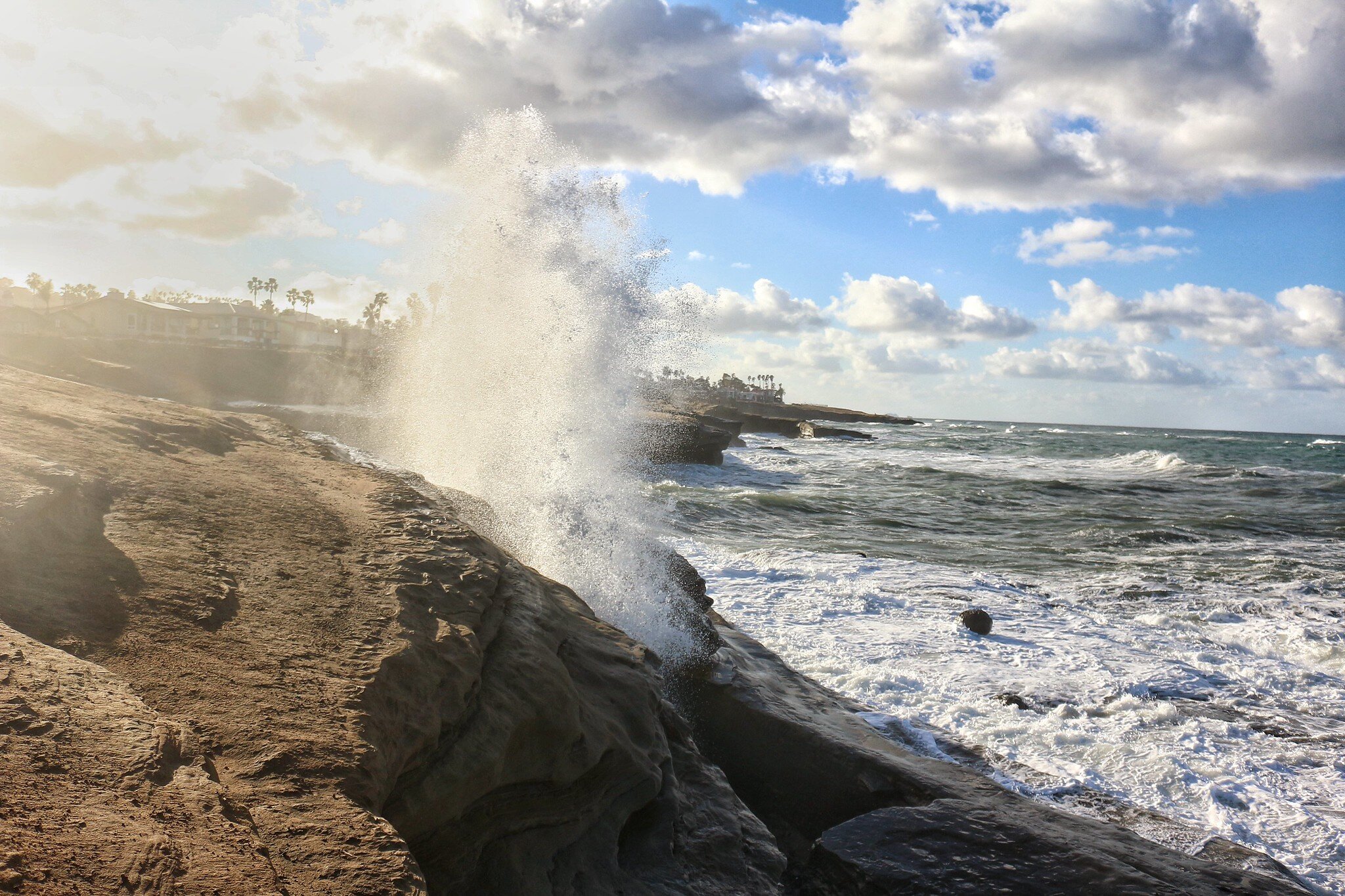
Coming out of these convenings, Exchange participants coalesced around five approaches (which have since been streamlined to four). Taken together, the Approaches described below have the potential to have a meaningful impact in addressing the region’s coastal challenges by prioritizing better projects, unifying multiple regional actors towards collaborative action, and attracting and generating more funding.
Several interesting common themes emerged across all approaches.
The approaches reflect the importance of considering the coast as an integrated part of a greater region. Inland communities’ economies and ecosystems, for instance, are directly tied to the coastline. The most effective coastal resilience projects should consider the rippling effects of coastal risks on inland communities, and conversely, marshall the full resources of the greater region to implement effective solutions, taking into account costs and benefits at the regional scale.
Participants also recognized the potential for pilots and charettes in solution development. Pilots offer the opportunity to test, iterate, and rapidly scale solutions, while maximizing limited resources. Several approaches capitalize upon these tactics.
Finally, all approaches reflected the need for regional-scale solutions to fully address regional-scale coastal challenges. For this reason, the approaches reflect a common desire to enhance regional coordination, integrating additional strategic focus and purpose. By mobilizing numerous actors and funding streams towards a common vision and goals for the coast, projects can have a total impact that is greater than the sum of their parts.
Approach 1:
San Diego Future Fund
Pooling Resources to Seed Innovation
Challenges in funding and financing coastal resilience solutions were identified—virtually unanimously—as among the most urgent obstacles across the region by key Exchange stakeholders. The San Diego Future Fund would couple best-in-class research and modeling with multiple, sustainable funding streams to support the testing, piloting, and scaling of high-impact coastal resilience projects across the greater San Diego region.
A collaborative effort, the Future Fund would aim to focus a variety of funding streams from numerous philanthropic, public, and private partners to address some of the critical challenges that hinder financing of innovative coastal resilience projects.
The Fund would unlock resources to capture the full benefits and costs of projects as well as of inaction; offer greater flexibility and appropriate cost-sharing in deployment; build in long-term sustainability; prototype and scale innovative financing mechanisms; and engage diverse sectors and multiple jurisdictions.
The Fund’s specific design is still in development, and various models will be explored over the course of an initial design phase. Funding partners would include philanthropy, but hybrid models could be explored—for example, models that receive public dollars generated by special assessment districts (with appropriate governance), or that leverage commercial solutions.
Components of the design surfaced at the Exchange include:
Development of a locally appropriate and best-in-class cost/benefit analysis that drives improved understanding of the value of the coast and coastal assets from multiple perspectives—not just ecosystems themselves, but economic and community systems as well. By quantifying both the cost of inaction as well as capturing the true value of a range of alternatives for the first time, this analysis will help make the business case for partners across sectors—and across the broader region—for coordinated investments in coastal resilience projects.
A rapid prototyping facility driven by small pilots that are monitored and scaled, leveraging regional research capacity. While the exact mechanisms for deploying resources need to be fully designed, resources could be awarded to local jurisdictions or coalitions of partners for innovative projects through a competitive process, with partnerships with local academic institutions enabling monitoring of progress so that successful interventions can be scaled.
Creation of a policy toolkit to explore private sector incentive models for public benefit projects. Harvesting lessons learned from Fund projects and partners as well as global best practices piloted elsewhere, the toolkit could support local jurisdictions in implementing policies and partnerships that drive private sector investments in coastal resilience.
Ultimately, the Fund would build a new regional capacity to leverage multiple funding sources, both existing and new, across jurisdictions and partners to pilot and scale higher impact projects more quickly.
It would also enhance capacity of local institutions to rapidly test solutions and scale resilience projects as appropriate.
Learn more about selected Case Studies that have inspired and can help inform this Approach.
Approach 2:
Regional Resilience Roadmap
Setting Collaborative Goals and Prioritizing Action
The San Diego Region benefits from a vibrant ecosystem of actors who all contribute individually to the region’s coastal resilience—from government entities and cross jurisdictional partnerships at multiple scales, to renowned academic institutions, to active philanthropies, to engaged nonprofit organizations, to an innovative private sector. However, many Exchange participants identified the opportunity to achieve greater impact through strengthened collaboration and coordination towards a singular vision for the coastline.
A Regional Resilience Roadmap would align regional stakeholders around this common vision and help to accelerate prioritized initiatives.
Resilient Cities Catalyst and partners launch Regional Roadmap in greater San Diego
The Roadmap strategic development process provides a regional framework for coordinated action. By establishing overarching unified strategic goals and accelerating the implementation of coastal resilience projects that advance these goals, this planning process model has proven effective globally at driving towards improved resilience projects that advance urgent priorities. Municipalities and regions across the globe have utilized Roadmap processes to coordinate action, align resources, and amplify best practices.
The Roadmap would drive toward several key outcomes for the region: a vision and a common set of collaborative resilience goals; a prioritized set of initiatives building towards these goals that drive an agenda for collective work; and an institutionalized, regional resilience steering committee committed to achieving the goals and leveraging collective investments.
While specific activities for the Roadmap are still in development, the process would bring together key stakeholders and help to amplify the existing regional network of collaborations and partnerships. Key components of a Roadmap process could include:
Tools and analysis to assess coastal resilience risks and opportunities and links to the region’s other shocks and stresses. This would incorporate extensive stakeholder engagement across regional partners.
Planning exercises to surface and define common resilience goals, and to develop a comprehensive set of initiatives that advance these goals.
Formation of a coordinating entity to carry forward identified priorities, as well as tracking and measurement mechanisms to monitor implementation progress.
Besides mobilizing action towards a unified vision, Exchange participants underscored that such a coordinating entity could help promote review and integration of coastal pilot projects across jurisdictions, and create a mechanism to strengthen regional dialogue and collectively address project implementation challenges (for example, many participants surfaced challenges related to permitting and regulations). This process would help strengthen regional capacity to pilot and coordinate coastal projects, and promote cross-jurisdictional collaboration.
Learn more about selected Case Studies that have inspired and can help inform this Approach.
Approach 3:
Oceanside Littoral Cell Design Lab
Piloting New Resilience Approaches
Pilot projects offer numerous advantages, creating an opportunity to develop and test innovative coastal resilience solutions—particularly, multibenefit nature-based solutions—with low financial risk, on a rapid timeline, and with an eye towards learning. Exchange participants underscored that building capacity to rapidly prototype and scale solutions would drive meaningful impact in building coastal resilience. The Oceanside Littoral Cell Design Lab would strengthen this regional muscle to test, learn from, and scale innovative solutions.
The Design Lab would serve as a multijurisdictional prototyping facility meant to accelerate implementation of pilot coastal projects.
Designed intentionally at the scale of natural systems—the Littoral Cell—it would promote activities at the scale needed to meet the region’s coastal challenges. The Lab would accelerate implementation of projects that foster cross-jurisdictional collaboration and help to scale those that are promising among participating jurisdictions through a network of shared learning.
While the Design Lab model is still in development, some elements of this Approach could include:
Connections and partnerships, including with leading local academic institutions, to incorporate metrics and monitoring. The Lab would help integrate best practices in monitoring and evaluation into projects, enabling project partners to evaluate projects rapidly for success and scale those that are effective across the region.
A regional learning network. Jurisdictions and partners would continuously share information, creating a peer-to-peer learning and knowledge exchange at inter- and intra-jurisdictional levels. This would provide space for practitioners from multiple departments and sectors to share successes and failures, as well as lessons learned.
Sequences of workshops and charettes to promote alternative exploration. Engagement through convenings could drive exploration of innovative approaches among key stakeholders and mobilize support. Creative techniques, including design competitions that involve experts in the selection process, could also advance development of innovative pilot approaches.
Over the course of the Exchange, participants continuously emphasized the value of learning while doing. By integrating pilots prototyped through the Oceanside Littoral Cell Design Lab with both the Future Fund and Regional Roadmap Approaches, there is an opportunity for the San Diego region to advance and fund a coordinated set of coastal pilot projects that collectively advance the region’s identified resilience goals.
Learn more about selected Case Studies that have inspired and can help inform this Approach.
Approach 4:
San Diego Future Campaign
Building Consensus to Invest in the Future
Exchange participants identified communications as a critical tool in building resilience. Creative community engagement can help educate local residents around complex topics related to climate and long-term risk that may be less salient to them in order to mobilize action needed to respond to these challenges. A concentrated communications effort would capitalize upon the region’s natural assets and employ innovative, experiential techniques to build consensus around high impact resilience solutions.
The San Diego Future Campaign would build upon the region’s strong culture of connectivity to the coastline and stewardship of natural resources, and could incorporate programming that features and engages residents actively with the region’s natural assets.
A communications effort would build upon partnerships with local educational and academic institutions as well as community-based organizations, many of whom are already using creative techniques and programs to reach residents. Finally, the Campaign would amplify the latest climate science—with an explicit focus on concrete steps that residents can take to contribute to the region’s resilience—while using language appropriate to reach a non-technical audience from diverse backgrounds.
Some of the components of a Future Campaign could include:
Imaginative experiential engagement, leveraging pilot coastal projects and involving San Diegans in participatory ways in their implementation.
Experimenting with methods like design charrettes, participatory social media campaigns, and citizen-science programming.
Coordination among diverse groups and jurisdictions to leverage their strengths in community engagement tailored to specific audiences.
Strong partnerships with local schools to link with ongoing educational initiatives and mobilize engagement over the long term among local youth.
The Future Campaign would complement and amplify the other Approaches described in this report. For example, it could drive toward discrete goals identified in the Resilience Roadmap and be coordinated with San Diego Future Fund. A Campaign could also be leveraged to advocate for specific policies or even ballot initiatives to increase public funding available for resilience action.
Learn more about selected Case Studies that have inspired and can help inform this Approach.
Additional Resources
Featured Case Studies
Each of the cases below, organized by the corresponding Approaches coming out of the Exchange, can serve as inspiration for what is possible in the San Diego region. Click on the cases and links below to learn more.
cases inspiring approach 1
San Diego Future Fund
Waikiki, Hawaii
The Special Improvement District brings together local business and property owners as well as state and local governments in an innovative partnership to fund coastal projects. This public private model allows partners to jointly fund priority projects that build coastal resilience, pooling private investments along with matching government funding.
San Francisco Bay Area, California
The 2016 San Francisco Bay Clean Water, Pollution Prevention and Habitat Restoration Measure, or Measure AA, funds habitat restoration projects, including flood protection projects as well as shoreline access and recreational amenity projects, for San Francisco Bay. The Measure includes a 20-year, $12 parcel tax across 9 Bay Area counties to raise approximately $25 million annually. Funding decisions are made by the San Francisco Bay Restoration Authority, an entity created by California’s state legislature with the power to raise funds as well as oversight authority.
Miami, Florida
The $400 million general obligation Miami Forever Bond was approved by voters in 2017, and allows the City to fund projects that address critical priorities: sea level rise and flood prevention; roadways; parks and cultural facilities; public safety; and affordable housing. All projects drive towards a single unifying vision and guiding themes. A Citizens Oversight Board provides additional transparency and accountability to inform project selection and oversight.
cases inspiring Approach 2
Regional Resilience Roadmap
Florida
Since 2010, the partnership formalized through the Southeast Florida Regional Climate Change Compact has enabled coordination in climate mitigation and adaptation across four member counties in the region. The Compact’s goals are to facilitate sharing of tools and resources, mobilize public support, and coordinate activities among local jurisdictions in order to amplify impact.
Oakland, California
Bringing together the City of Oakland, County of Alameda, Oakland Unified School District, and other local educational authorities, the Youth Ventures Joint Powers Authority (JPA) coordinates authorities and consolidates resources around five priority areas to improve outcomes for Oakland’s youth and families, with a focus on those who have traditionally experienced disparities. These “Impact Tables” around the priority areas of health, education, wealth, housing, and safety bring together government and community partners and allow for development of initiatives that cross silos. The City tracks indicators corresponding with each Impact Table on its citywide dashboard.
Houston, Texas
This nonprofit is responsible for redevelopment and stewardship of 10 square miles of this prized natural asset in the Houston area, which includes waterfront and green spaces that flow through downtown as well as the Port. With philanthropic support as well as government partnerships, Buffalo Bayou Partnership (BBP) is responsible for major capital improvements, conservation efforts, and recreational programming that connects residents to the Bayou. BBP also operates and maintains Buffalo Bayou Park, which is funded annually as a Tax Increment Reinvestment Zone.
New Orleans, Louisiana
The Design Review Committee, whose membership spans City agencies and departments, meets monthly to review and inform design of capital projects. This regular coordination improves project design and integration across government agencies, leading, for example, to projects with greater resilience benefits.
Los Angeles, California
Through an Executive Order launched in the Resilient Los Angeles Strategy, Mayor Garcetti established Chief Resilience Officers in each City department. This cohort of officials serves as a cross-agency coordinating body that works with the City’s Chief Resilience Officer to implement resilience initiatives and embed resilience across City government.
East Coast
President Obama created the Hurricane Sandy Rebuilding Task Force in the wake of the devastating storm, appointing Secretary of Housing and Urban Development Shaun Donovan as Chair. The Task Force promoted cabinet-level coordination in advancing a resilient recovery for the affected region, supporting communities in building back better able to withstand future shocks and stresses. The Task Force released a Rebuilding Strategy that informed spending of federal recovery dollars.
cases inspiring Approach 3
Oceanside Littoral Cell Design Lab
Norfolk, Virginia
RISE Resilience Innovations cultivates resilience solutions that simultaneously address coastal climate risks while creating economic opportunity. The nonprofit accelerator holds challenges and provides support, including space, technical assistance, funding, and more, to promising entrepreneurs and start-ups that address coastal resilience challenges.
The Netherlands
In the Netherlands, the Dutch government worked with scientists, local officials, and other stakeholders to construct the Sandmotor: a peninsula of 21.5 million cubic meters of sand off the Dutch coast that combats coastal erosion. Previously, rapid erosion of the coastline threatened nearby coastal cities, requiring repeated interventions such as nourishment and replenishment that were both costly and disruptive to natural ecosystems. The Sandmotor works with rather than against nature, capitalizing upon the natural movements of wind, tides, and ocean currents to replenish sand and protect the coastline.
Mississippi River Delta, Louisiana
Changing Course brought together experts in engineering, science, planning, and design for a competition focused on building a more resilient and sustainable delta ecosystem in the Lower Mississippi River and addressing intersecting environmental, economic, and community challenges. In partnership with the State of Louisiana and the U.S. Army Corps of Engineers, and with philanthropic support from multiple funding partners, the competition resulted in three winning designs that informed later planning processes and projects in the region.
cases inspiring Approach 4
San Diego Future Campaign
Baltimore
The City of Baltimore, in partnership with the nonprofit, private sector, and academic communities, solicited and tested creative new design approaches for gathering safely under social distancing guidelines. Ten winning concepts selected by an expert panel are featured in a Design for Distancing handbook, and are now being piloted across Baltimore. City residents are currently able to experience these interventions and provide feedback so that designers can learn and iterate upon pilot projects.
Louisiana
The State of Louisiana partnered with the Foundation for Louisiana to launch a community-centered planning process in at-risk coastal communities. Over the course of 71 public events that engaged almost 3,000 residents across 6 parishes, multi-sector partners developed community-specific plans and projects in a holistic way that leveraged grassroots engagement to envision the future of coastal communities directly with residents.
East Coast
This design competition was launched by the U.S. Department of Housing and Urban Development in collaboration with nonprofits and philanthropy following Hurricane Sandy’s devastating impact on the region. The process combined global design expertise with community engagement, resulting in 7 projects to help the region recover and build resilience, as well as an innovative model that has since been replicated. Harvesting lessons from implementation of these projects, RBD developed Elements of Effective Engagement: 12 Best Practices of Community Engagement, a guidebook that details best practices along with numerous featured examples.
San Diego
Climate Education Partners (CEP) was one of six National Science Foundation-funded projects in the country to conduct climate education research and outreach activities. Developed and implemented by a team of world class science educators and researchers, behavioral science researchers, communications experts, and regional leaders, CEP aimed to develop an integrated climate literacy model in order to build a community of concerned leaders and stakeholders working across the political spectrum to broaden understanding of San Diego relevant climate science and impacts and find mutually beneficial solutions. After five years, CEP concluded and developed a community toolbox for other communities looking to leverage these tools, frameworks and communications best practices.
About
The San Diego Region Coastal Exchange was made possible thanks to generous support from Alumbra Innovations Foundation, The San Diego Foundation, and The Conrad N. Hilton Foundation.
San Diego Coastal Exchange participants
Resilient Cities Catalyst (RCC) is a global non-profit that helps cities build their resilience by changing the way they plan and act. We help cities build the capacities and partnerships needed to understand, prioritize, and concretely address their risks and chronic stresses as they pursue their strategic goals or recover from crisis. The RCC team builds upon several years of experience working to build resilience across California, including leading the Southern California Resilience Initiative in the greater Los Angeles region, which is focused on building resilience in the face of wildfire and extreme heat, as well as the recently announced California Resilience Partnership across the state.
RCC partners with city governments, businesses, neighborhoods, and community stakeholders around the globe to:
1. Develop an enabling environment to build strong partnerships between cities and their communities allowing them to drive policy, planning, design, finance, and institutional resources for resilience-building efforts.
2. Ensure that ideas are turned into meaningful action by addressing gaps between project plans, project implementation and desired impacts.
3. Share and replicate learnings through a growing community of practice.
The San Diego Regional Climate Collaborative was established in 2011 as a network for public agencies to advance climate change solutions that mitigate greenhouse gas emissions and adapt to the effects of climate change. Partnering with academia, non-profit organizations, and business and community leaders, the Collaborative raises the profile of regional leadership, shares expertise, and leverages resources.
Our mission is to connect the region to advance climate change solutions. By bringing people together, we envision a region that is prosperous and resilient with a commitment to maintaining a high quality of life, and fostering a green and growing economy with an equitable and unified approach. Together, we are prosperous and resilient.













